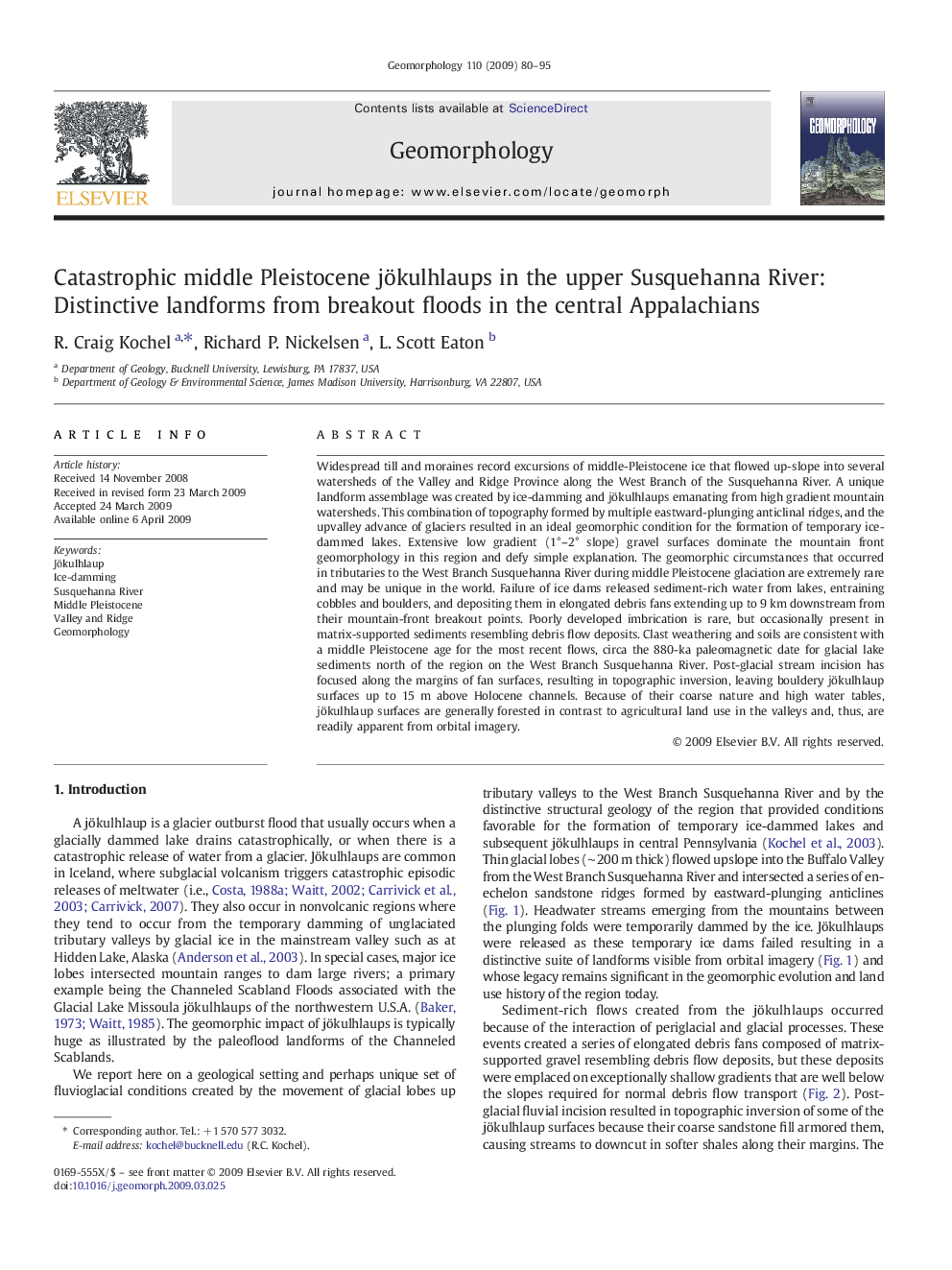| کد مقاله | کد نشریه | سال انتشار | مقاله انگلیسی | نسخه تمام متن |
|---|---|---|---|---|
| 4686124 | 1635537 | 2009 | 16 صفحه PDF | دانلود رایگان |
عنوان انگلیسی مقاله ISI
Catastrophic middle Pleistocene jökulhlaups in the upper Susquehanna River: Distinctive landforms from breakout floods in the central Appalachians
دانلود مقاله + سفارش ترجمه
دانلود مقاله ISI انگلیسی
رایگان برای ایرانیان
کلمات کلیدی
موضوعات مرتبط
مهندسی و علوم پایه
علوم زمین و سیارات
فرآیندهای سطح زمین
پیش نمایش صفحه اول مقاله

چکیده انگلیسی
Widespread till and moraines record excursions of middle-Pleistocene ice that flowed up-slope into several watersheds of the Valley and Ridge Province along the West Branch of the Susquehanna River. A unique landform assemblage was created by ice-damming and jökulhlaups emanating from high gradient mountain watersheds. This combination of topography formed by multiple eastward-plunging anticlinal ridges, and the upvalley advance of glaciers resulted in an ideal geomorphic condition for the formation of temporary ice-dammed lakes. Extensive low gradient (1°-2° slope) gravel surfaces dominate the mountain front geomorphology in this region and defy simple explanation. The geomorphic circumstances that occurred in tributaries to the West Branch Susquehanna River during middle Pleistocene glaciation are extremely rare and may be unique in the world. Failure of ice dams released sediment-rich water from lakes, entraining cobbles and boulders, and depositing them in elongated debris fans extending up to 9 km downstream from their mountain-front breakout points. Poorly developed imbrication is rare, but occasionally present in matrix-supported sediments resembling debris flow deposits. Clast weathering and soils are consistent with a middle Pleistocene age for the most recent flows, circa the 880-ka paleomagnetic date for glacial lake sediments north of the region on the West Branch Susquehanna River. Post-glacial stream incision has focused along the margins of fan surfaces, resulting in topographic inversion, leaving bouldery jökulhlaup surfaces up to 15 m above Holocene channels. Because of their coarse nature and high water tables, jökulhlaup surfaces are generally forested in contrast to agricultural land use in the valleys and, thus, are readily apparent from orbital imagery.
ناشر
Database: Elsevier - ScienceDirect (ساینس دایرکت)
Journal: Geomorphology - Volume 110, Issues 3â4, 15 September 2009, Pages 80-95
Journal: Geomorphology - Volume 110, Issues 3â4, 15 September 2009, Pages 80-95
نویسندگان
R. Craig Kochel, Richard P. Nickelsen, L. Scott Eaton,